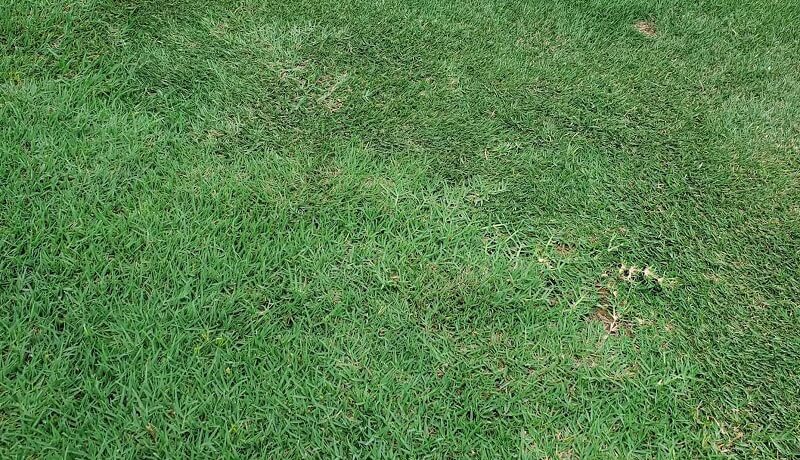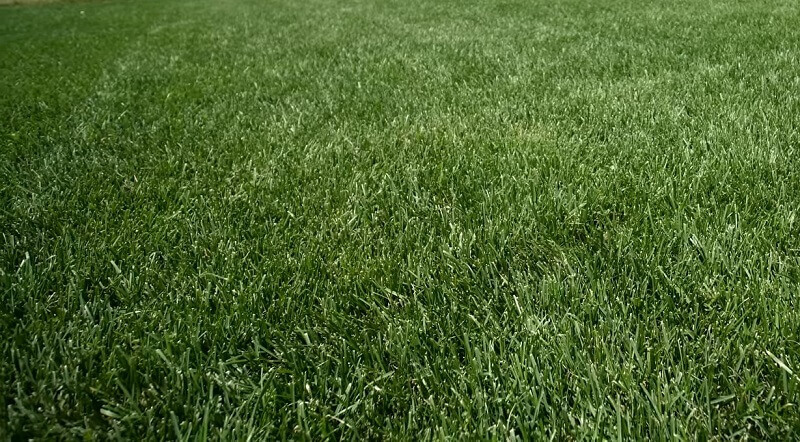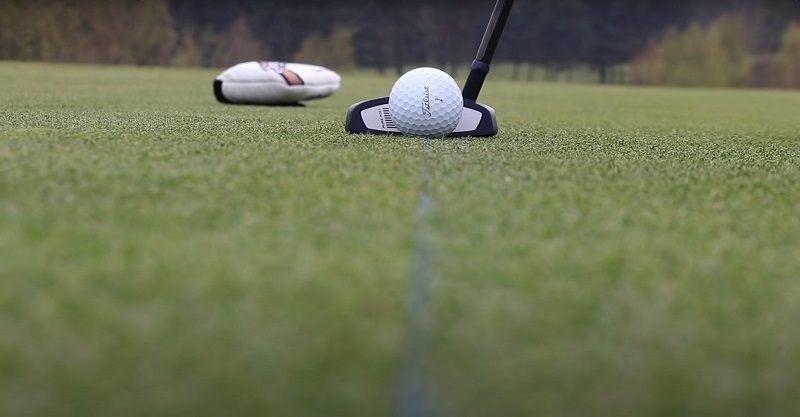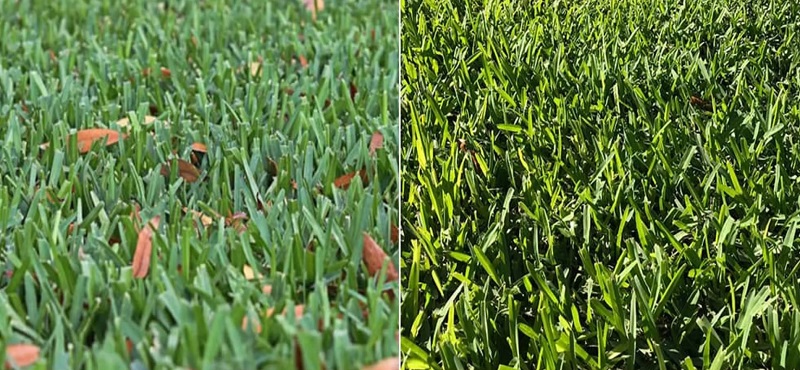Golf is a game of precision and strategy, but did you know the type of grass on a golf course can significantly impact your performance? In this article, we’ll explore the different types of grass commonly found on golf courses and how they can affect your game. We’ll also provide tips on how to adapt your playstyle to suit any grass type, helping you master your game on any surface.
Why Does Grass Type Matter in Golf?
The grass type on a golf course plays a crucial role in determining the quality of your shots and overall experience. Whether you’re a seasoned golfer or a beginner, understanding the characteristics of different grass types can give you an edge on the green. The height, density, and resilience of the grass will impact how the ball rolls and moves, affecting the speed and accuracy of your shots. By paying attention to the grass type on each hole, you can make informed decisions and adjust your game strategy accordingly. So, the next time you’re out on the course, take note of the grass type and let it work for you.
Common Grass Types on Golf Courses
Depending on the region’s climate, golf courses typically feature a combination of warm-season and cool-season grasses. Let’s take a closer look at some of the most common grass types you may encounter on the greens.
Warm-Season Grasses

Bermuda Grass
Bermuda grass is undoubtedly the preferred choice for several golf courses across the globe, particularly those situated in warmer regions, thanks to its remarkable heat and drought resistance. This type of grass is popular for many reasons, but perhaps most notably for its thick and consistent growth, resulting in an ideal playing surface for the game. Its distinct fine texture only adds to its popularity, causing balls to roll faster, making it a preferred option for fairways and greens. All in all, it’s easy to see why so many golf courses choose Bermuda grass as their trusted foundation.
Zoysia Grass
Zoysia grass is a warm-season grass that has become a common sight on golf courses in the southern United States. Its dense growth and slow growth pattern make it an excellent grass for heavily-trafficked areas, such as tees and fairways. It sets Zoysia grass apart with its incredible wear and tear resilience, making it a perfect choice for golfers looking for a consistent playing surface. The ball support provided by Zoysia grass is unparalleled, while its ability to resist divots ensures that the course stays in top condition for longer periods. Overall, Zoysia grass is a great option for golf courses prioritizing durability, quality, and consistency.
Paspalum Grass
Paspalum grass is a versatile and salt-tolerant grass, making it ideal for coastal golf courses. Its fine texture allows for a smooth ball roll, while its density provides a cushion-like feel underfoot. Paspalum grass is often used on greens and tees, offering golfers a consistent and enjoyable playing experience.
Cool-Season Grasses

Bentgrass
Bentgrass is a cool-season grass that is renowned for its ability to thrive in northern climates. Its fine, dense texture creates a smooth and carpet-like surface, making it the perfect choice for putting greens. One of the primary advantages of bentgrass is that it produces a tight, consistent surface that ensures a true ball roll. This feature has made it a favorite among golfers who appreciate its predictability.
Kentucky Bluegrass
Kentucky bluegrass is a great cool-season grass found on golf courses in cooler climate regions such as Europe and the UK. It has dense growth that makes it very suitable for fairways and roughs, yet it still offers consistency and a playing surface that matches well with the look of a professional course. Despite not being as smooth of a surface as bentgrass, Kentucky bluegrass is resilient enough to withstand even heavy foot traffic and any divots which may be caused. In addition to its low-maintenance nature, it can recover quickly from damage, making it an ideal grass for many golf courses.
Fescue
Fescue grasses have become a staple in the golf course industry due to their impressive fine texture and adaptability to various soil types. As golfers traverse across the course, they may find themselves playing on fescue grass in the roughs, fairways, or even greens. What sets fescue grass apart from other types of grass is its thin blades and moderate density, which provide golfers with a unique playing experience. Professionals within the industry understand the value of fescue grass, as it plays a significant role in a golf course’s aesthetic and functional aspects.
Adapting Your Game to Different Grass Types

Knowing the grass type on a golf course can help you adjust your playing style and improve your performance. Here are some tips for adapting your game to different grass types:
Putting on Different Grasses
- Expect a faster ball roll on Bermuda grass due to its fine texture. Make sure to read the grain direction and adjust your putting stroke accordingly.
- Zoysia grass offers a slower ball roll compared to Bermuda grass, so be prepared to apply more force on your putts.
- Bentgrass provides a consistent and true ball roll. Ensure that you read the green accurately and adjust your aim and speed to sink those crucial putts.
Chipping and Pitching on Different Grasses
- Bermuda grass can be sticky, causing the club to dig into the turf. Make sure to use a higher lofted wedge and keep your hands ahead of the clubface to avoid getting stuck.
- Zoysia grass offers excellent ball support, which can result in cleaner contact and more control over your shots. Use this to your advantage by focusing on precise shot placement.
- Fescue grass can be unpredictable due to its thin blades and varying density. Practice chipping and pitching from different lies to gain confidence and improve your feel for shots from the fescue.
Playing from the Rough
- When playing from the Bermuda grass rough, use a steeper swing to avoid getting caught in the dense growth.
- Zoysia grass roughs can be challenging due to their thickness. Use a more lofted club and focus on making solid contact to escape the rough.
- Fescue roughs can be tricky because the ball may sit down in the grass, making it difficult to make clean contact. Use a more vertical swing and concentrate on making solid contact to advance the ball.
Common Diseases And Pests That Affect Turfgrass Quality
Along with climate, diseases and pests can affect the quality of a golf course’s turf grass. Common turfgrass diseases include brown patches, grey leaf spots, take-all root rot, dollar spot, and anthracnose.
These diseases should be monitored regularly as they can spread quickly and lead to reduced turf quality, damage the roots and blades of grass, and cause discoloration.
In addition, turfgrass can be affected by pests such as nematodes, mites, chinch bugs, and sod webworms. These pests feed on the grass, which can cause damage and discoloration if left untreated.
Final Thoughts
Understanding the different grass types on a golf course is essential for mastering your game on any surface. By familiarizing yourself with the characteristics of cool-season grasses like bentgrass and Kentucky bluegrass, as well as warm-season grasses like Bermuda and Zoysia grass, you can make better-informed decisions about your club selection, swing and putting techniques. You’ll be well-equipped to handle any course and improve your overall performance with practice and knowledge.
FAQs
What Is The Most Common Grass Type On Golf Courses?
Bentgrass and Bermuda grass are the most common grass types on golf courses, with bentgrass being more prevalent in cooler climates and Bermuda grass in warmer climates.
How Can I Identify The Grass Type On A Golf Course?
You can usually find information about the grass type on a course’s website or by asking the course management. You can also observe the grass’s texture, color, and growth patterns to help determine its type.
Do Different Grass Types Require Different Maintenance Practices?
Different grass types have varying maintenance requirements, such as mowing heights, watering schedules, and fertilization practices. Course management typically adjusts maintenance practices based on the specific grass type.
Is It Necessary To Adjust My Golf Equipment For Different Grass Types?
Adjusting your golf equipment, such as your wedge bounce, can be beneficial when playing on different grass types. However, it’s not always necessary, and many golfers can play effectively without making significant equipment changes.
Can The Grass Type Affect The Difficulty Of A Golf Course?
The grass type can influence the difficulty of a golf course. Factors such as green speed, ball lie, and the thickness of the rough can vary depending on the grass type and may require adjustments to your game.
What Type Of Grass Is Most Resistant To Disease?
Fescue is a popular turf grass due to its durability and increased tolerance of wear and tear while still maintaining a premium course quality look. It is also relatively disease-resistant and requires less water than other grasses. Bermuda grass is also relatively disease-resistant, making it popular for warm-weather courses.
Does The Golf Course Use Artificial Grass?
Most golf courses do not use artificial grass, as the playing surface does not provide the same quality or feel as natural turf. Artificial grass may be used in certain areas, such as greens, but this is usually reserved for locations requiring a specific type of grass. In most cases, it is best to maintain and manage natural turf grass. This will provide the best performance and quality for both players and spectators.
How Often Should Golf Courses Mow Their Grass?
The mowing frequency will depend on the type of grass and other factors, such as weather and the amount of play at each course. Generally, warm-season grasses should be mowed at least once per week, while the height of the cut will vary depending on the desired results. Given the higher tolerance for wear and tear, cool-season grasses may require more frequent mowing. It is best to consult a professional lawn care provider to determine the optimal mowing schedule for each course. This will help ensure that the turf remains healthy and looks its best.



It is difficult to find educated people about this topic! Thanks